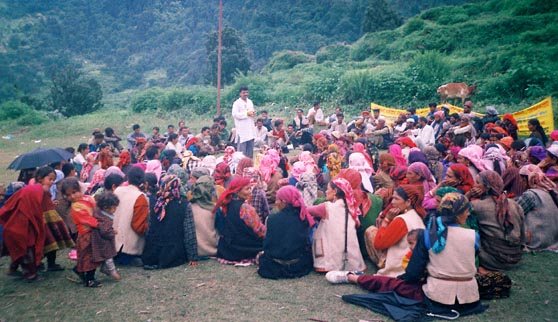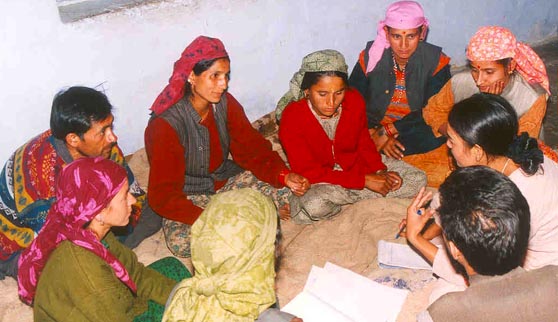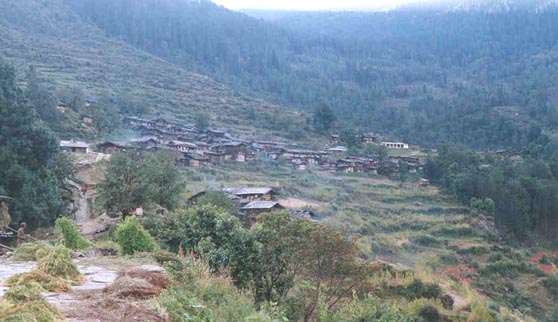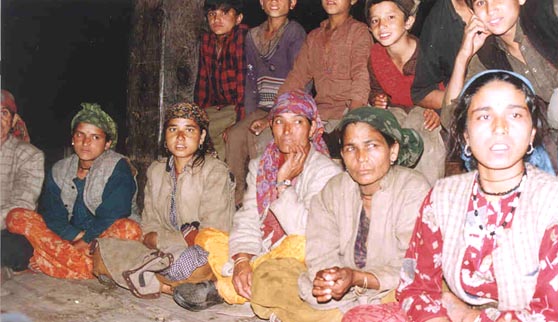
In 2012, SOPHIA began working with numerous sedentary village communities concerning their forest rights. The villages are located in three districts across the states of Uttarakhand and Uttar Pradesh and share the forests with the Van Gujjars. Primarily, these villages are made up of marginal farmers and landless laborers of mixed backgrounds, but SOPHIA also works with certain specific communities in each district. The forests are a essential to all of the communities' livelihoods; in general the forests are considered to be communal lands and are governed by traditional rules that dictate villagers’ use.
The sanctified river Ganges and the Yamuna flow out of the district of Uttarkashi, which is composed of the forested lowland Himalaya and the snow peaked high Himalaya. The majority of villagers’ livelihoods either revolve around agriculture or the rearing of horses and ponies for transportation. Furthermore, some villagers rear livestock such as cows, sheep and goats. Forest materials are used for firewood, edible herbs, building materials and fodder, which is composed of either grasses or lopped tree leaves. One of the communities SOPHIA works with in this area are the Parvitayas of Uttarkashi, a mountain dwelling indigenous group.


Dehradun district has a temperate climate; the rivers Yamuna and Ganges flow through it and the Garhwal Himalaya and Shivalik hills surround it. Many peoples’ livelihoods are actualised through farming, labouring and manufacturing. The livestock that are reared are primarily cows, buffalo and goats; the forests provide people with fodder for these animals, firewood and herbs. The district of Dehradun is also home to the Jaunsari people, who belong to the hill tribes of the Jaunsar area of Uttarakhand, with whom SOPHIA works.
The district of Saharanpur is home to the Shivalik hills and is surrounded by the Ganges and the Yamuna. The district is highly forested, compared to other districts, with forest cover at almost 10%. The fertile lands produce a range of crops and many people farm or are employed as agricultural labourers. Furthermore, a large number of the population keep milk-producing livestock, namely cows and buffalo. The Saharanpuri forests provide village communities with herbs, a source of fuel and fodder for their livestock. Among the communities SOPHIA works with in the district of Saharanpur are the Taungyas, who belong to an oppressed caste of laborers who were contracted for plantation labor under British rule.


Kot village resides within the district Uttarkashi; high upon the side of a mountain, the village gazes down to a clear river and is surrounded by snowy, Himalayan peaks. The village’s communal, deciduous forest spreads up the mountainside and provides fuel, water with which to irrigate the fields and fodder for the livestock. The community lop trees for fodder every three years and collect forest grasses; potatoes, apples and pinto beans are predominantly grown and cattle, sheep and goats are kept. Politically, Kot is composed of a Gram Sabha, voters, a Van Panchayat, elected council and a Gram Pradhan, an elected leader. The Van Panchayat maintains the village forest and misuse is settled either internally, or by the Forest Department.
Many Van Gujjars make their summer homes above Kot and in general the two communities have a cooperative relationship. The Van Gujjars have rights to the grassy meadows above the tree line of Kot’s forest. The villagers sell potatoes to the Van Gujjars, give them pumpkins and send their cattle up to the meadows with the Van Gujjars’ buffalo herds.